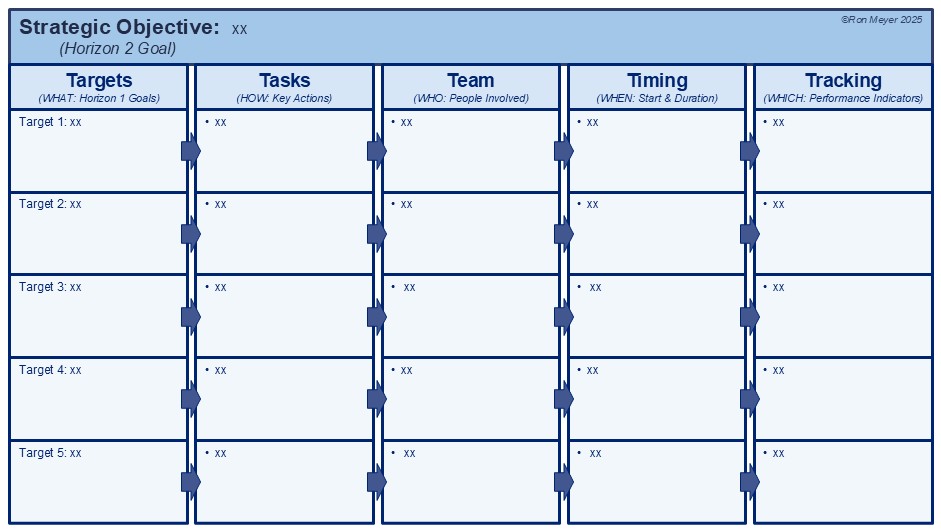Strategy is the course of action being followed and is usually shaped by three types of aims: a long-term aim called a strategic vision (also called a horizon 3 goal, typically 5-10 years into the future), some mid-term aims called strategic objectives (horizon 2 goals, typically 2-3 years out) and multiple short-term aims called strategic targets (horizon 1 goals, 6-12 months out).
Ideally, when setting an intended strategy, people should think future-back, first formulating their vision and objectives as a big picture and then filling in the targets that need to be reached in the shorter term, along with a detailed plan of action. To know what to do, such a plan should be SMART – Specific, Measurable, Actionable, Realistic and Time-bound.
The 5T SMART Plan template offers a one-page framework for detailing each strategic objective in an organization’s big picture strategy. It asks the user to identify at most five strategic targets that need to be realized for each strategic objective, followed by the required key actions, people involved and timing of each action and some measure by which progress towards the target can be tracked. As such, the 5T SMART Plan is more detailed and tangible than the widely used OGSM (Objectives-Goals-Strategies-Measures) framework, while it also avoids the confusion of using the word “strategies” incorrectly.

The six categories of the template are the following: